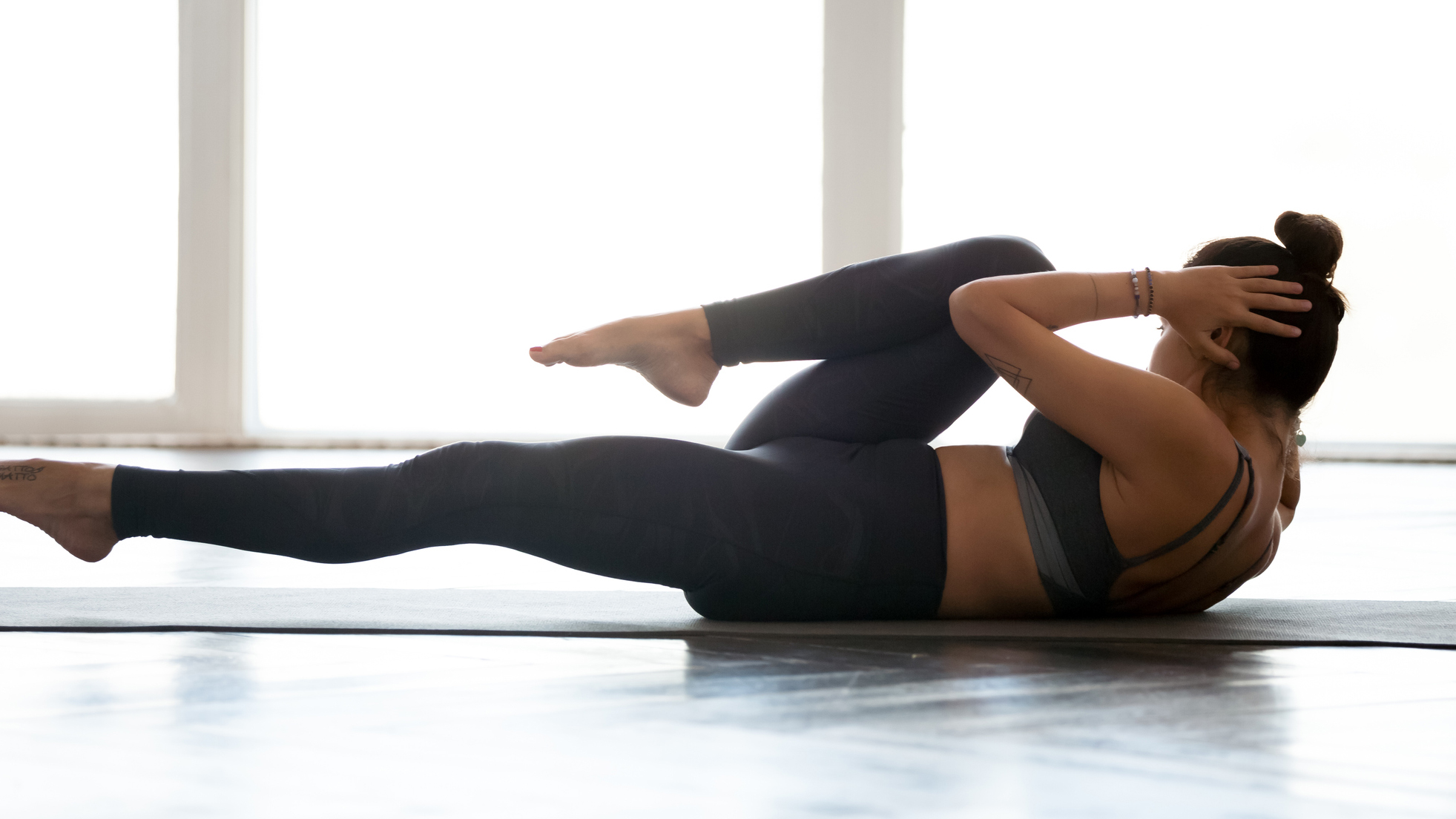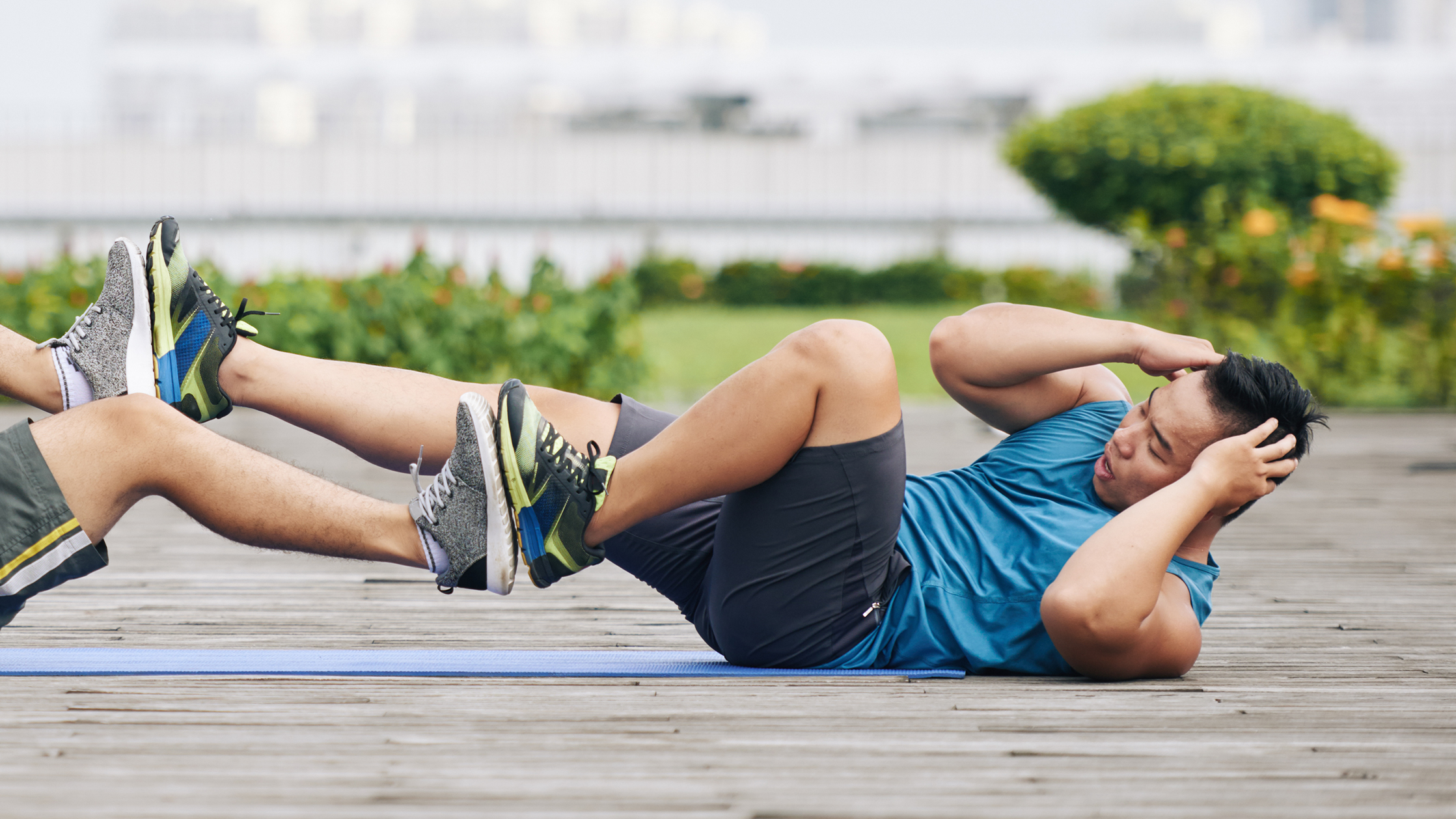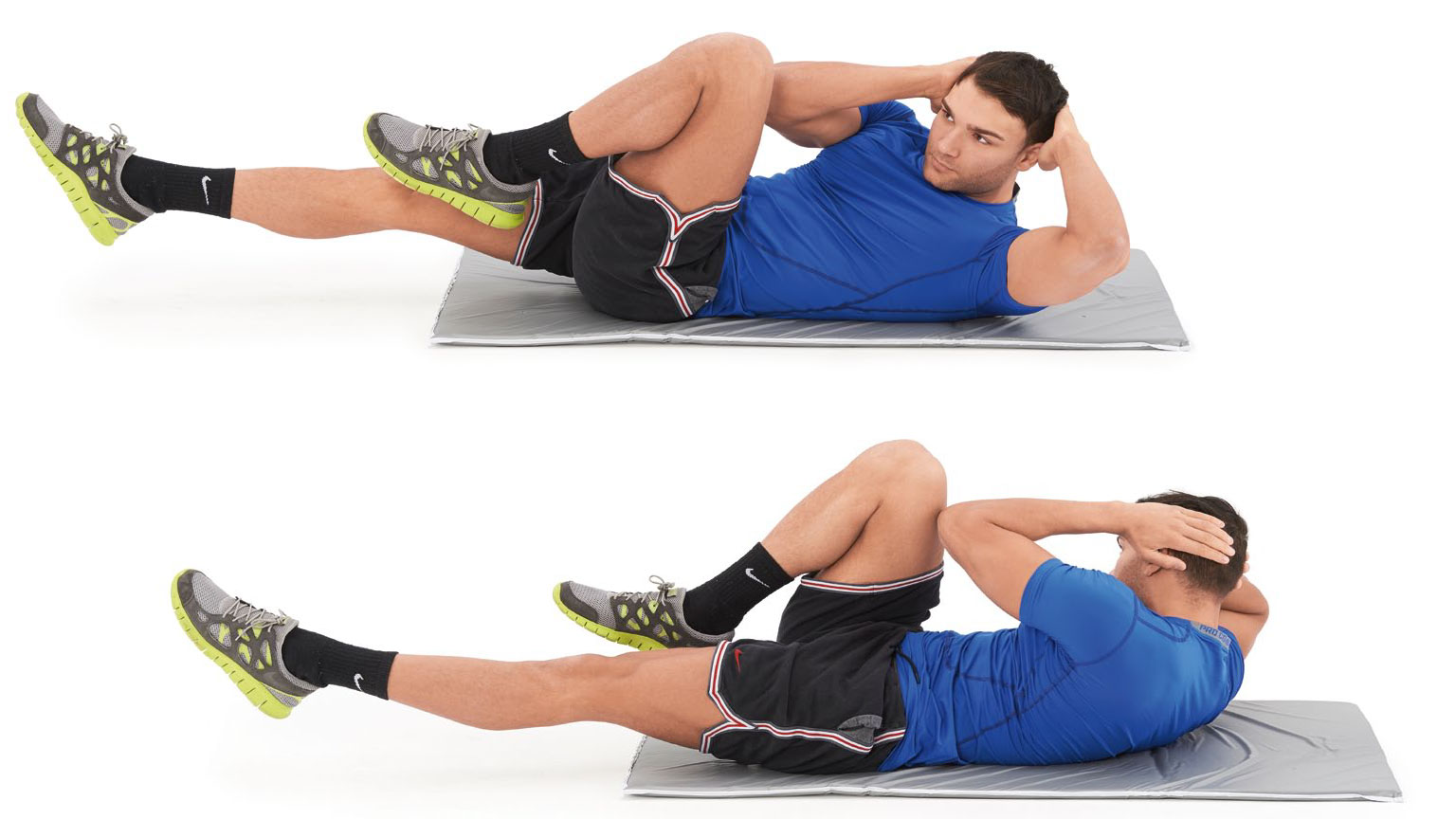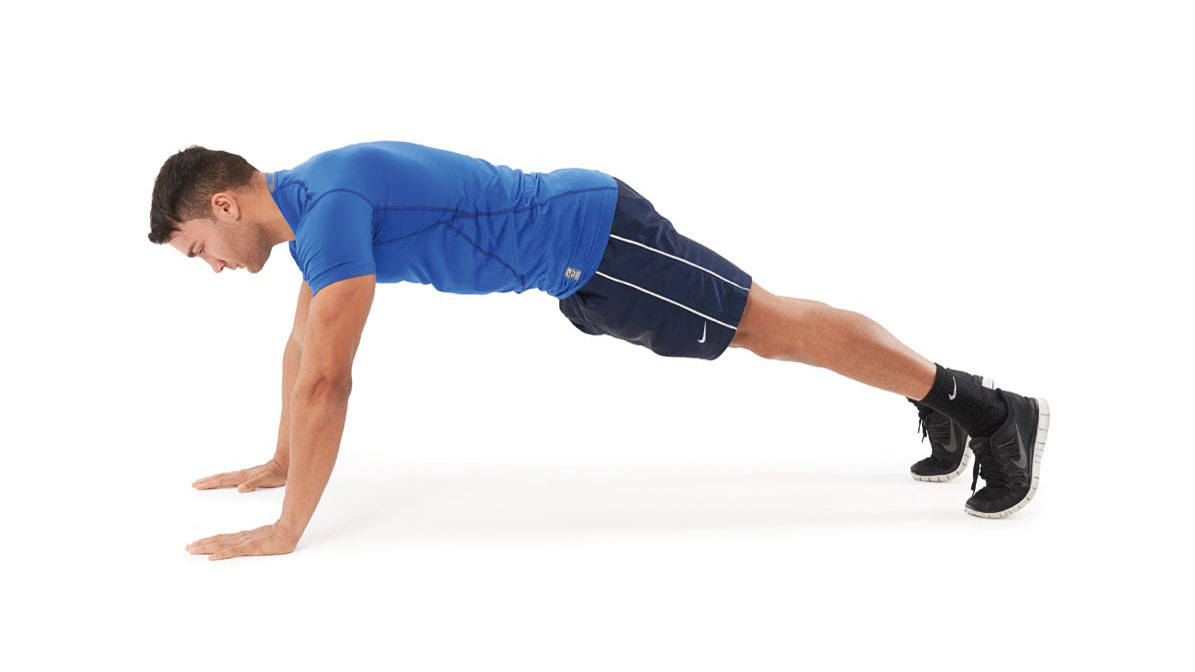How to do bicycle crunches: Get a deep core burn and tone your obliques
The bicycle crunch can net you a stronger core. Here's our comprehensive guide to this gym-class staple


If you're looking for a stronger core, you could do a lot worse than trying a few bicycle crunches. A stronger core is excellent for people in every walk of life, whether you're attempting to get a toned midriff to hit the beach or you're looking for core strength to improve longevity and stay active well into your twilight years.
You’ve probably tried traditional crunches. Perhaps you’ve even tried reverse crunches, which hit your lower abdominal muscles and are among the best abs workouts.
However, in order to take your training to the next level, you need a move to target all these muscle groups at the same time as well as your “side abdominals”, otherwise known as your obliques. Enter the bicycle crunch.
So named because you’re effectively doing a “pedalling” motion while performing the crunch, bicycle crunches are able to effectively target different groups of abdominal muscles than regular crunches. Because of the twisting motion, you’re placing a lot of emphasis on your obliques.

However, the upwards motion with your shoulders also targets your upper abs, while you’re also bringing your knees in to target your lower abdominals.
Continually swapping sides ensures you’re hitting all these muscle groups effectively, and getting a great cardio workout at the same time. According to researchers from San Diego State University, bicycle crunches generate almost two and a half times as much activity in the abdominal muscles as traditional crunches.
This is the most dynamic crunch variation you’ll ever do, and it provides a terrific cardiovascular workout that’s guaranteed to get the heart pumping.
Get the Fit&Well Newsletter
Start your week with achievable workout ideas, health tips and wellbeing advice in your inbox.
Crunches and bicycle crunches: Things to bear in mind
Crunches of all kinds have gotten a bad rap recently. If you don't keep a flat back, you risk curving your spine and pressing it against the floor, creating lots of pressure on your spine and even internal organs. It's one of the reasons the US marines were in the news recently for abandoning the exercise during its fitness tests.
If you struggle with holding good form, or you're concerned about spine health, there are core exercises such as the plank (you can view our how to do a plank guide here) that do not compress the spine at all.
Alternatively, you can do the bicycle crunches on a softer surface, such as an exercise or bosu ball, in order to reduce the pressure on your spine. Limit the time you spend in the crunch position too, mixing it up with other free-standing exercise.
When you do the bicycle crunch, ensure you don't just move those elbows: really compress your obliques, folding your shoulder and elbow into your knee. This will stretch the other oblique, working it hard.
How to do a bicycle crunch

- Start in the usual sit-up position, with your legs together, knees bent, and fingers behind your ears. Your core should be tight and remain this way throughout the exercise.
- When you’re ready to begin, simultaneously draw your left knee towards you, kick out your right leg and perform a sit-up. As you sit up, twist your body so your right elbow moves towards your left knee.
- Without stopping, straighten your left leg and bring your right knee towards your chest. When the sit-up movement is complete, your elbow should be touching your opposite knee. Simultaneously twist your core and upper body to bring your left elbow towards your right knee.
- Keep up this pedalling and twisting motion without stopping for at least 30 seconds. You’ll soon be breathing heavily and aching all over!
How to do a bicycle crunch: Common bicycle crunch mistakes

Although this move looks simple, there's a lot of little form tweaks you can make to ensure the bicycle crunch is more effective.
“Keep your arms in the same position the entire time. and think about leading with that shoulder instead of just the elbow,” says Megan Davies, personal trainer for Beachbody’s Clean Week program. Just twisting your elbows won’t be enough to activate your upper abs and obliques: to do that, you’ll really need to lean your shoulder into the move.
If you struggle to keep your lower back flat, Davies has a fix. “You can modify this move by placing both feet flat on the floor with the knees bent in start position,” Davies tells us. “If you find you cannot keep your lower back on the ground, this may be an indication to modify for now.”
Also, remember to take it slow: going too fast could cause your form to break down. Think of it as cycling uphill.
Complementary exercise: Cross-body mountain climber

There are a number of variations on the mountain climber, but this is the ‘cross body’ version. This exercise is another dynamic oblique-targeting movement which will raise your heart rate and supercharge your metabolism, helping you to burn fat in addition to toning your core.
- Get in the upright plank position with your arms straight, your feet together and your body straight.
- Raise your right knee across your body, towards your left elbow, before returning to
- the plank position.
- Raise your left knee across your body, towards your right elbow, before returning to the plank position. Alternate between legs for at least 30 seconds.
Liked this?
Matt Evans is an experienced health and fitness journalist and is currently Fitness and Wellbeing Editor at TechRadar, covering all things exercise and nutrition on Fit&Well's tech-focused sister site. Matt originally discovered exercise through martial arts: he holds a black belt in Karate and remains a keen runner, gym-goer, and infrequent yogi. His top fitness tip? Stretch.